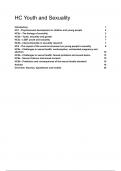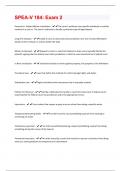Samenvatting
INFLUENCING PEOPLE MINOR - RSM - complete summary 2021
- Instelling
- Erasmus Universiteit Rotterdam (EUR)
Content: - JUDGEMENT UNDER UNCERTAINTY: HEURISTICS AND BIASES - A DUAL-SYSTEM FRAMEWORK TO UNDERSTAND PREFERENCE CONSTRUCTION PROCESSES IN CHOICE - A PERSPECTIVE ON JUDGMENT AND CHOICE MAPPING BOUNDED RATIONALITY - CHOICES, VALUES, AND FRAMES - HARNESSING THE SCIENCE OF PERSUASION - THE USES ...
[Meer zien]













